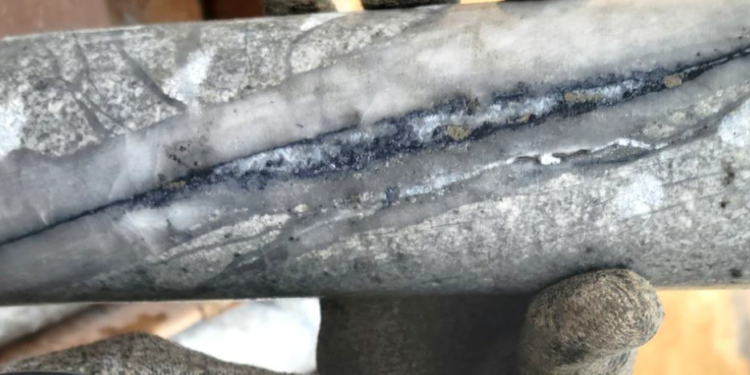American West Metals Limited (ASX: AW1) has visually logged over 400m of mineralisation in diamond drill holes WD22-04 and WD22-05 at the West Desert Project in Utah, USA.
“The drilling is continuing to produce amazing results. The last two drill holes, WD22-04 and WD22-05 were important for resource definition and expansion and certainly appear to have delivered for us,” Managing Director, Dave O’Neill, said.
“Both drill holes have hit thick intervals of mineralisation, and importantly, confirmed our assumptions and geological models. “These two drill holes complete the resource definition phase of the drilling programme and have continued to highlight the quality and scale of the West Desert Deposit.
“We are excited to now begin the exploration phase of the drilling to test a number of high-quality targets in the near mine area.
“We look forward to reporting on these results and the assays from the completed drilling in the coming weeks.”
WD22-04 – Expanding The Copper Zones
WD22-04 is the fifth drill hole of American West’s drill programme and was designed to extend the strong copper mineralisation located on the porphyry/skarn contact further out to east.
Historical drill holes in this location have intersected high-grade semi-massive chalcopyrite (including 13.4m @ 2.7% Cu from in drill hole CC-39) and a number of these zones remain open.
WD22-04 was drilled oblique to the main trend of drilling to utilise a fully permitted drill pad that was located on private land (100% owned by AW1). The hole was drilled to a depth of 754.8m and encountered over 400m metres of visual mineralisation.
Intersections are expressed as downhole widths and are interpreted to be close to true widths. Drill hole WD22-04 has confirmed the continuation of copper mineralisation along the prospective porphyry/sediment contact.
Numerous thick zones of chalcopyrite rich mineralisation were encountered within the main porphyry stock (disseminated and vein hosted) and the contact related magnetite skarn. Strong sphalerite was also present in the more massive magnetite skarns.
Significantly, the drill hole also intersected approximately 137m of disseminated and vein hosted molybdenite at depth (from 618m downhole). The molybdenite is present as disseminations within the quartz monzonite porphyry stock, and with quartz + pyrite in late-stage veins that cut across other forms of mineralisation (including the West Desert Deposit).
This mineralisation further highlights the outstanding growth potential and emerging porphyry related mineral system.
WD22-05 – Continuity Of Strong Mineralisation
Drill hole WD22-05 was designed to test further continuity of the higher-grade zones within the Main and Deep Zones of West Desert Deposit. The drill hole has successful encountered broad intervals of mineralisation that are interpreted to represent key sections of the West Desert orebody and is the first drill hole by American West that has intersected the central portion of the Deep Zone.
WD22-05 drilled to a depth of 739.7m has intersected approximately 230m of visual mineralisation mostly hosted within magnetite rich skarn and carbonate replacement style deposits (CRD).
The intersections herein are expressed as downhole widths and are interpreted to be close to true widths, and approximately 80- 90% within the CRD mineralisation. The upper drill hole intervals are interpreted to form part of the Main Zone of the deposit and are comprised of three main sphalerite rich magnetite rich skarns hosted within dolomite and limestone.
Particularly strong intervals were encountered between 180 and 225m (45m) downhole, and 294 and 350m (56m) downhole. The lower skarn (between 294 and 350m downhole) also contains variable amounts of chalcopyrite within the entire interval, with strong silica alteration and potential coarse gold logged at approximately 304m.
A more copper-rich magnetite skarn with bornite is present directly below the above interval between 350 and 365m downhole. A broad zone of semi-weathered, sooty sulphide rich skarn is present between 237 and 269m, and this may represent another structure parallel to the Juab Fault.
he lower intervals within WD22-05 show visual similarities to typical mineralisation in the Deep Zone, where stratiform magnetite rich skarn and CRD is hosted within steeply dipping carbonate sediments of variable thickness.
Three, >20m thick intervals were encountered at depth and are interpreted to form part of the Deep Zone of the West Desert Deposit. The lower zone contains semi-massive sphalerite within localized thickenings of CRD style mineralisation.
For further information please visit: https://www.americanwestmetals.com/site/content/












